FUNDING CUTS IMPACT CT HUMANITIES: Help CT Humanities navigate recent funding cuts and continue our vital work across Connecticut. All donations made to CTH will be matched dollar-for-dollar up to $50,000. Donate today!
Now Viewing:
Women
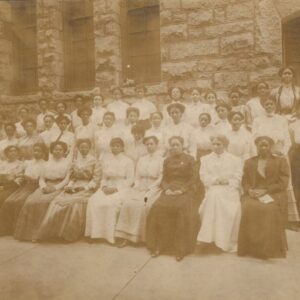
Martha Minerva Franklin: Breaking Barriers for Black Nurses
An activist for Black nurses in the early 20th century, Martha Minerva Franklin worked to end discrimination and secure equal rights for her profession.
Read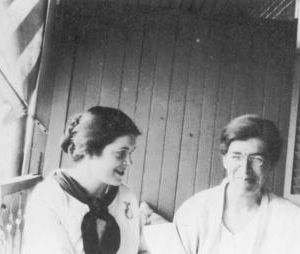
Ethel Collins Dunham: Pioneer in Pediatrics
A student and professor of medicine, Dr. Ethel Collins Dunham devoted her life to ensuring the care of children throughout the early and mid-20th century.
Read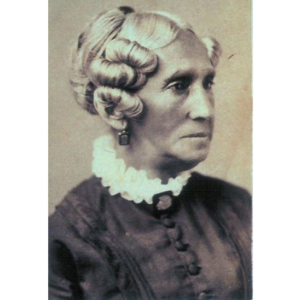
Sarah Harris Fayerweather
Sarah Harris Fayerweather was a Black activist and abolitionist who fought for school integration in the early 19th century.
Read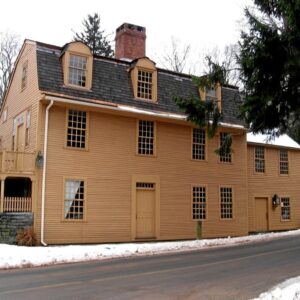
Thankful Arnold’s House
The Thankful Arnold House helps visitors explore the lives of women under the constraints of English Common Law during the early 19th century.
Read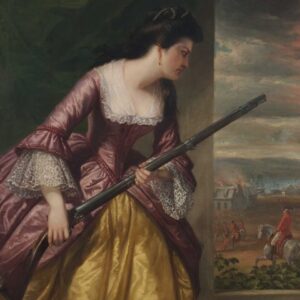
Abigail Hinman: Heroine of the American Revolution or Legend?
Allegedly defending her house during the American Revolution in 1781, New London resident Abigail Hinman made a name for herself as a patriot legend.
Read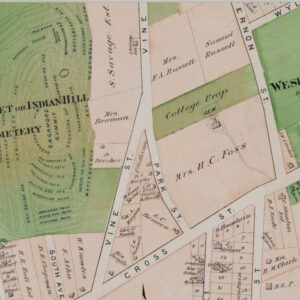
Middletown’s Beman Triangle: A Testament to Black Freedom and Resilience
One of the earliest and most politically active free Black neighborhoods in Connecticut emerged in Middletown in the late 1820s, the Beman Triangle.
Read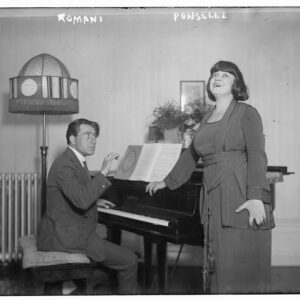
Rosa Ponselle: Meriden’s Famous Musical Daughter
Rosa Ponselle etched her name in history as the first American-born and American-trained singer to star with the Metropolitan Opera Company.
Read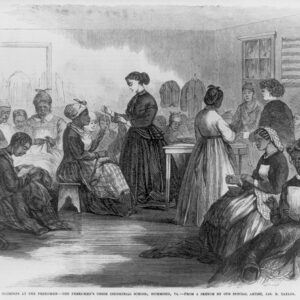
Hebron’s Josephine Sophia (White) Griffing and a Vision for Post-Emancipation America
From before emancipation and the 13th Amendment, Josephine Sophie White Griffing of Hebron, Connecticut, was an ardent advocate for enslaved and free people.
Read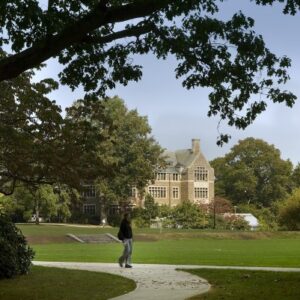
Connecticut College for Women: The State’s First All-Female Institution of Higher Learning
At a time when most universities accepted only men, Connecticut College for Women provided a liberal arts education for women.
Read
Miss Porter’s School in Farmington
Miss Porter’s School, founded in 1843 in Farmington, is an elite, female, privately funded, 40-acre, educational institution in central Connecticut.
Read
Derby’s Osbornedale Farms, Frances Kellogg, and the Dairy Industry
A family legacy developed by Frances Kellogg, Derby’s Osbornedale Farms stands out for its impact on the Holstein-Friesian breed and contributions to the dairy industry.
Read
“Girl Pilot”: Mary Goodrich Jenson Breaks Barriers in Aviation and Journalism
Blending her aviation and journalism careers, Wethersfield’s Mary Goodrich Jenson pushed the boundaries of both fields.
Read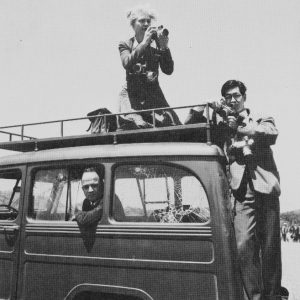
Photojournalist Margaret Bourke-White: “No Picture Was Unimportant to Her”
Margaret Bourke-White photographed some of the 20th century’s most significant people and events, but spent her later years in Darien, Connecticut.
Read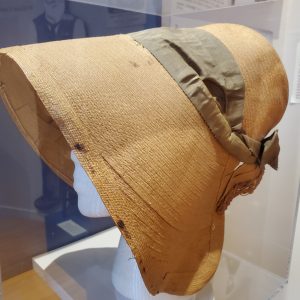
Sophia Woodhouse Welles: Wethersfield’s World-Famous Bonnet Maker
Wethersfield’s Sophia Woodhouse Welles made a name for herself as an inventor and a businesswoman in antebellum America with her bonnets.
Read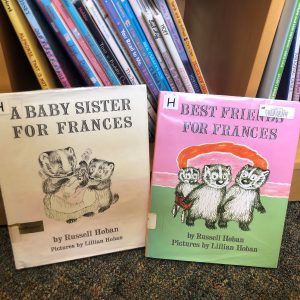
Lillian Hoban: Beloved Illustrator of “I Can Read” Books
Lillian Hoban contributed her talents to nearly one hundred books, securing herself a place as one of the country’s best-loved authors and illustrators.
Read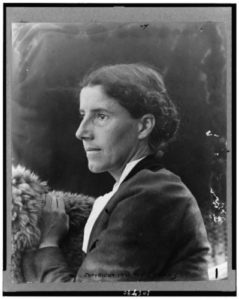
Charlotte Perkins Gilman
Best remembered for her short story “The Yellow Wallpaper,” this Hartford author’s larger legacy is a life dedicated to women’s issues and social reform.
Read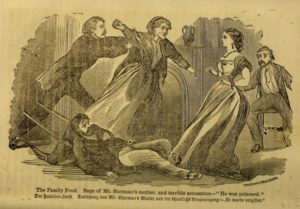
Lydia Sherman: The Derby Poisoner
Lydia Sherman confessed to killing three husbands and four children, but it is believed that the total number of her victims may be much higher.
Read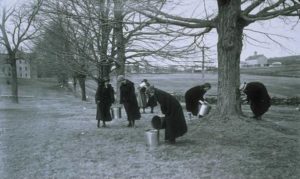
A New Source of Farm Labor Crops Up in Wartime
During times of war, in Connecticut, as in many other states, women became an increasingly important resource in food production.
Read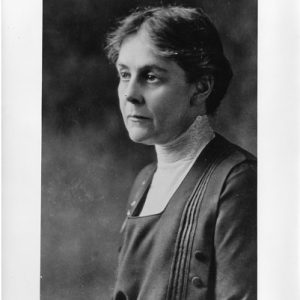
Alice Hamilton: The Nation’s Leading Expert on Industrial Diseases
Dr. Alice Hamilton was a leading authority on industrial diseases and the first female faculty member at Harvard before she retired to Hadlyme, Connecticut.
Read
Clare Boothe Luce Changed Perceptions about Women in Business and Politics
Clare Boothe Luce became the first woman to represent Connecticut in the US House of Representatives and later became an ambassador to Italy.
Read
The Trailblazing Bessye Bennett
In 1974, Connecticut finally admitted its first African American female lawyer, Bessye Bennett.
Read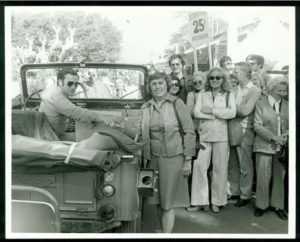
America’s First Woman Governor: Ella Grasso, 1919-1981
Born to Italian immigrant parents in Windsor Locks, Grasso held state and federal offices at a time when women politicians were rare.
Read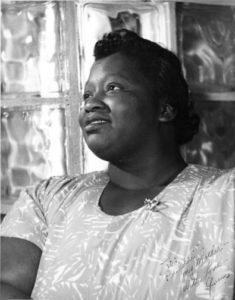
Actress Gwen Reed Best Remembered for Dedication to Childhood Literacy
Gwen Reed was an actress and educational advocate who grew up in Hartford in the early 20th century.
Read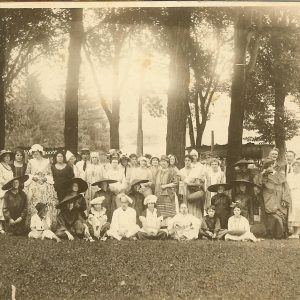
Discovering the Mysterious Identity of the “Kent Limner”
It took over a century to solve the mystery of Ammi Phillips’ identity—one of the most prolific folk portraitists in 19th century America.
Read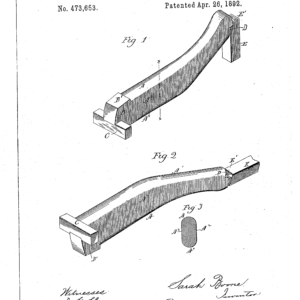
Sarah Boone: First Connecticut Black Woman to Receive Patent
In1892, Sarah Boone of New Haven became the first Black woman in Connecticut to be awarded a patent—for an improvement in the use of an ironing board.
Read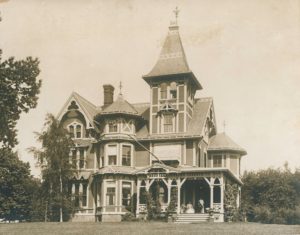
Dr. Mary B. Moody Challenges Victorian Mores About Women in Medicine
New Haven resident Dr. Mary Moody the first female graduate of the medical school at the University of Buffalo, and the first female member of the American Association of Anatomists.
Read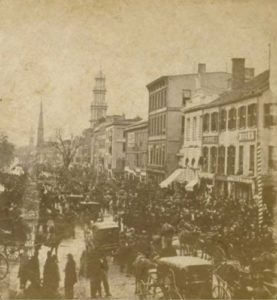
When Elections in Hartford Were a Piece of Cake
Unlike today, in the 18th and 19th centuries, Election Day met with great celebration.
Read
Colonel Ruth A. Lucas: Literary Advocate
In 1968, Ruth A. Lucas became the first African American woman in the air force to attain the rank of colonel and advocated for literacy her whole career.
Read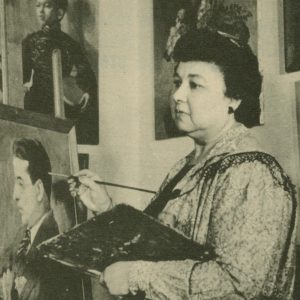
Laura Wheeler Waring: Renowned African American Portrait Artist and Educator
Born in Hartford, Laura Wheeler Waring was an eminent portrait artist of prominent African Americans of the Harlem Renaissance.
Read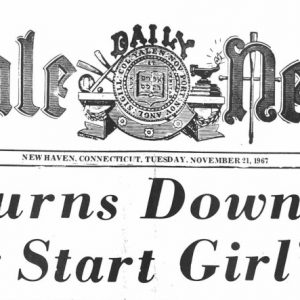
The Merger That Was Not Meant To Be: Yale University and Vassar College
Yale University’s failed merger with Vassar College—a women’s college in Poughkeepsie, New York—in the late-1960s gave Yale the final push into coeducation.
Read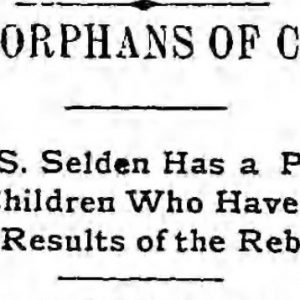
Children of the Reconcentrados: Caroline Selden’s Cuban School
During the Cuban War of Independence, Caroline Selden opened a school for Cuban children in Brooklyn, NY and Old Saybrook, CT.
Read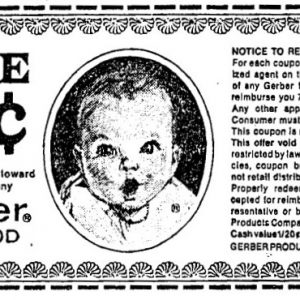
Birthplace of the Gerber Baby – Who Knew?
Westport’s artist Dorothy Hope Smith used her neighbor, Ann Turner, as inspiration for her iconic Gerber Baby trademark drawing.
Read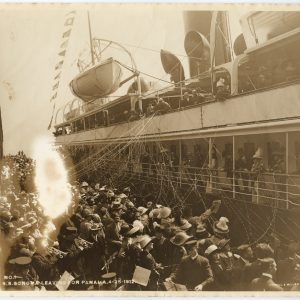
Helen James Chisholm: A Hartford Teacher in Hawaii
Originally from Hartford, Helen James Chisholm’s career took her all the way to the Pacific to teach and run an orphanage.
Read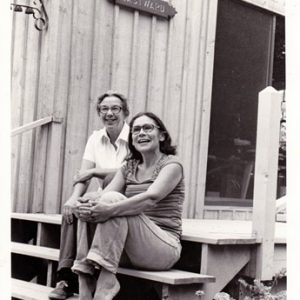
Rewriting the Norm: How Two East Haddam Women Revolutionized Nonsexist Language
East Haddam’s Casey Miller and Kate Swift were both outspoken advocates for eradicating gender bias in the English language.
Read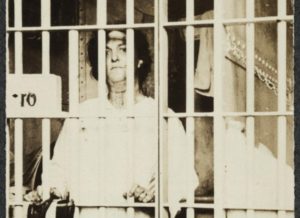
19th Amendment: The Fight Over Woman Suffrage in Connecticut
In Connecticut, Frances Ellen Burr and Isabella Beecher Hooker took up the cause by forming the Connecticut Woman Suffrage Association (CWSA) in 1869.
Read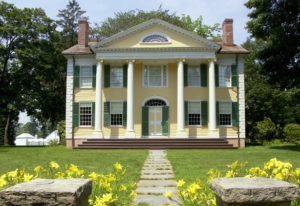
Florence Griswold’s Home: A Story of Perseverance and Community
The Florence Griswold House, once a private residence, also served as a finishing school for girls in the 19th century and the center of the Lyme Art Colony.
Read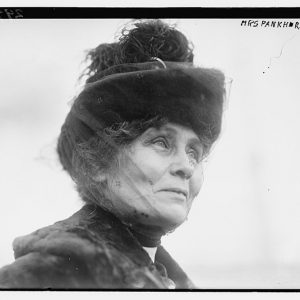
Emmeline Pankhurst’s “Freedom or Death” Speech Energizes Connecticut Women in 1913
In 1913, a famous British suffragist, Emmeline Pankhurst, gave a powerful and memorable speech on the steps of the Parsons Theater in Hartford.
Read
Rosamond Danielson: Windham County Suffragist and Community Leader
Rosamond Danielson was a respected suffragist, World War I worker, and philanthropist from Putnam Heights.
Read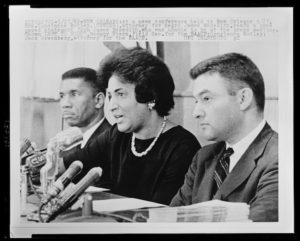
Constance Baker Motley: A Warrior for Justice
New Haven lawyer Constance Baker Motley became famous for arguing some of the most important cases of the civil rights movement.
Read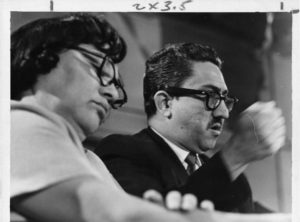
Maria Colón Sánchez, State Representative and Community Advocate
The first Latina elected to the Connecticut General Assembly started as a grassroots activist for Hartford’s Puerto Rican community.
Read
Griswold v. Connecticut – Today in History: June 7
On June 7, 1965, the Supreme Court ruled 7-2 in Griswold v. Connecticut.
Read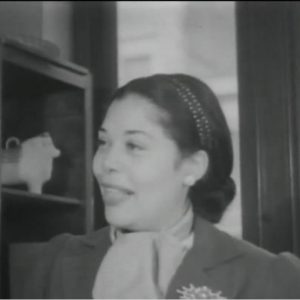
Ann Petry: Old Saybrook’s Bestselling African American Author
Living most of her life in Old Saybrook, Ann Petry was the first African American woman to sell over one million copies of a book with her first novel, The Street.
Read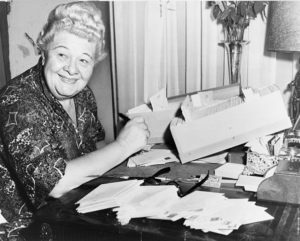
Sophie Tucker, The Last of the Red-Hot Mamas
Hartford’s own leading lady was a lively entertainer whose career spanned over five decades and whose generosity spilled over to various and numerous charities.
Read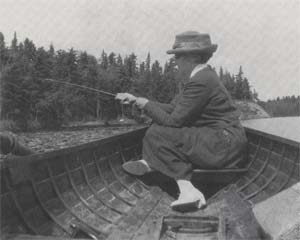
Edith Watson: Camera Artist
Over the five decades Edith Watson traveled around North America, her keen eye and box camera lens captured the otherwise untold stories of women.
Read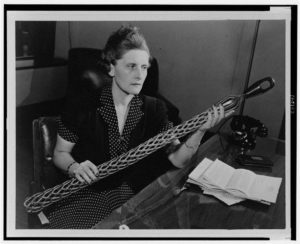
Vivien Kellems Takes On the IRS
Reformer Vivien Kellems fought her most famous battle against the Internal Revenue Service (IRS) as she sought tax reform for businesses and single people.
Read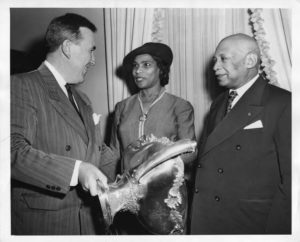
Marian Anderson’s Role in the Civil Rights Movement
Marian Anderson performed and traveled in segregated spaces and emerged as one of the great singers of the 20th century.
Read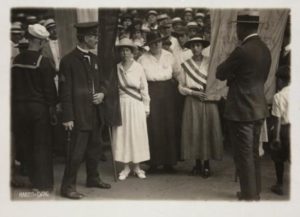
Women of the Prison Brigade
These women from all walks of life had one thing in common: they had been jailed for demonstrating in support of women’s right to vote.
Read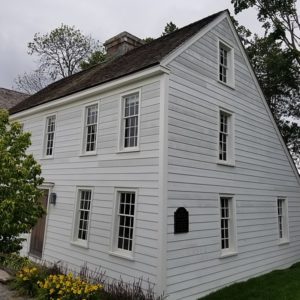
Elizabeth Fones Winthrop Feake Hallett Helps Found Greenwich
In the middle of the 17th century, Elizabeth Fones Winthrop Feake Hallett played an integral part in purchasing the land that became Greenwich, Connecticut.
Read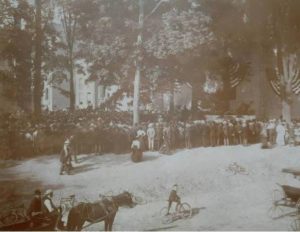
Emily Holcombe Pioneered to Preserve Connecticut’s Colonial Past
Emily Seymour Goodwin Holcombe was an activist and preservationist who took pride in the state’s history, particularly its colonial past.
Read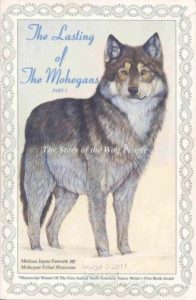
The Story Trail of Voices
Mohegan history and religion have been preserved by many different voices in many different families through Mohegan Oral Tradition. However, since before the American Revolution, four women in particular have passed on Mohegan stories.
Read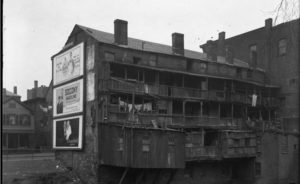
Hartford’s Sex Trade: Prostitutes and Politics
Union organizer Rebecca Weiner was among the few who proposed to address the social and economic conditions that enabled the world’s oldest profession to thrive in the capital city during the 1800s.
Read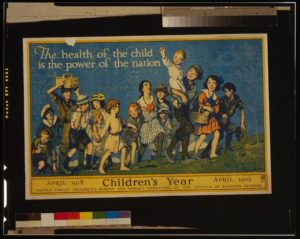
Helen F. Boyd Leads the Charge for Better Public Health
A long-time Connecticut resident, Helen F. Boyd Powers was a national advocate for greater public access to nursing and healthcare education.
Read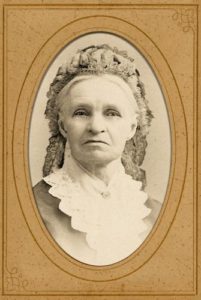
A Voice for Veterans: A Civil War era ‘Whistle-Blower’ – Who Knew?
Her obituary stated that “Mrs. Ambler was always expected to say something” on behalf of those who had fought for the Union.
Read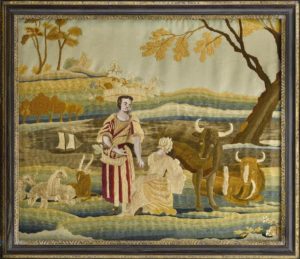
Faith Trumbull: The Artist Was a Young Girl
Her younger brother may be the better-known artist today, but it was her accomplished needlework pictures that inspired his youthful imagination.
Read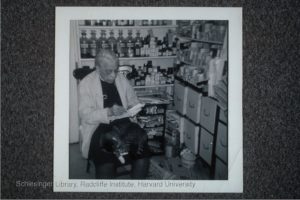
Miss James, First Woman Pharmacist in CT Right in Old Saybrook
Remembering Anna Louise James, the first woman pharmacist in the state of Connecticut.
Read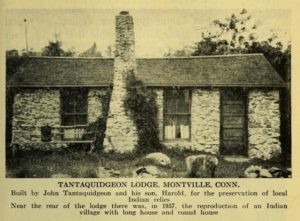
Medicine Woman Gladys Tantaquidgeon and Mohegan Cultural Renewal
Gladys Tantaquidgeon dedicated her life to perpetuating the beliefs and customs of her tribe and championed the protection of indigenous knowledge across the United States.
Read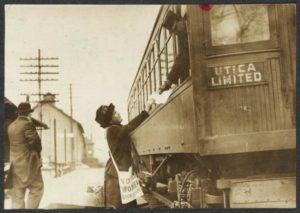
A Feeling of Solidarity: Labor Unions and Suffragists Team Up
The voting booth and the shop floor were two important arenas in the fight for women’s equality.
Read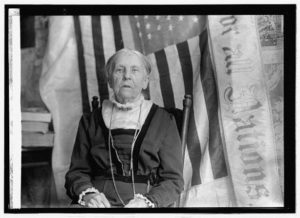
America’s First Ordained Woman Minister: Olympia Brown and Bridgeport’s Universalist Church
Long-time Bridgeport resident Olympia Brown was the first woman ordained as a minister in the United States and campaigned vigorously for women’s suffrage.
Read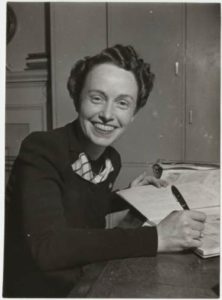
Providing Bundles for Britain and News for America
Janet Huntington Brewster Murrow was a Middletown native who grew up to be one of America’s most trusted news correspondents, philanthropists, and the wife of Edward R. Murrow.
Read
Hannah Bunce Watson: One of America’s First Female Publishers
Hannah Bunce Watson was one of the first female publishers in America and helped the Hartford Courant survive one of the most challenging times in its history.
Read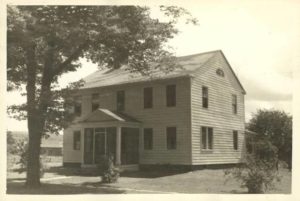
Nellie McKnight Promotes History and Literacy throughout Ellington
Nellie McKnight was a teacher, librarian, and historian who served the town of Ellington for most of her life.
Read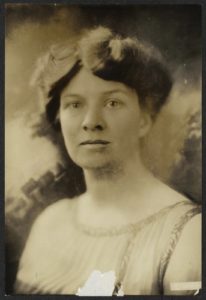
Katharine Houghton Hepburn, A Woman Before Her Time
This Hartford suffragist and reformer fought for women’s rights in the first half of the 20th century.
Read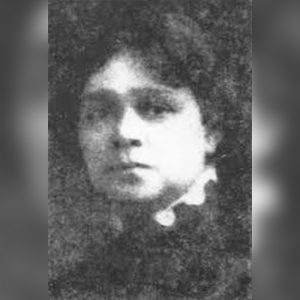
Mary Townsend Seymour: Hartford’s Organizer, Activist, and Suffragist
Mary Townsend Seymour was a leading organizer, civil rights activist, suffragist, and so much more in Hartford during the early 20th century.
Read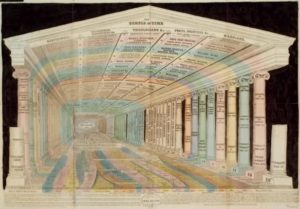
Emma Hart Willard: Leader in Women’s Education
Berlin-born Emma Hart Willard used her passion for learning to create new educational opportunities for women and foster the growth of the co-ed system.
Read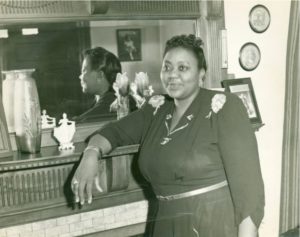
Marietta Canty House
Hartford’s Marietta Canty House is primarily significant for its association with actress Marietta Canty, who received critical acclaim for her performances in theater, radio, motion pictures, and television as well as for her political and social activities.
Read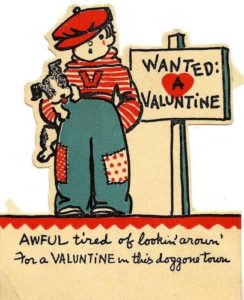
History in a Heart
A set of old Valentine’s Day cards, kept safe in a cloth-covered scrapbook, provide a look back at the sometimes humorous art of expressing heartfelt sentiments.
Read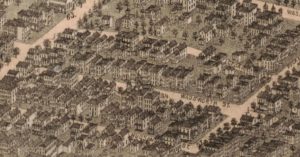
The Lives of Addie Brown and Rebecca Primus Told Through their Loving Letters
Addie Brown and Rebecca Primus were two free Black women whose lives intersected in Hartford, Connecticut in the 19th century. Letters written between them imply their relationship was more than friendship.
Read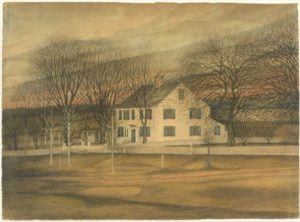
The Smith Sisters and Their Cows Strike a Blow for Equal Rights – Today in History: January 8
Abigail and Julia Smith of Glastonbury (along with Isabella Beecher Hooker) fought for a woman’s right to speak at town meetings and have a say in government.
Read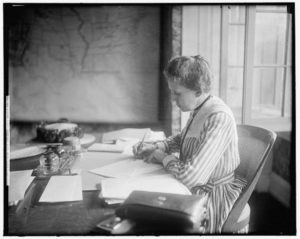
Ida Tarbell: The Woman Who Took On Standard Oil
Ida Tarbell became one of the most famous “muckraking” journalists in 19th century America, thanks largely to her investigation of the Standard Oil Company.
Read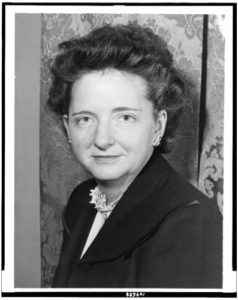
Elizabeth Bentley Born – Today in History: January 1
Elizabeth Terrill Bentley is best known for her role as an American spy for the Soviet Union—and for her defection to become a US informer.
Read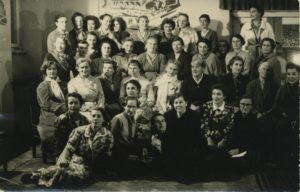
A Godmother to Ravensbrück Survivors
Philanthropist Caroline Ferriday aided women whose internment at a German concentration camp during WWII left them scarred, physically as well as psychologically.
Read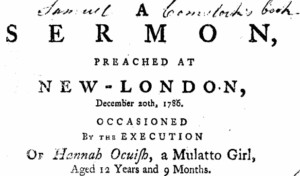
A Most Unusual Criminal Execution in New London
On December 20, 1786, a crowd gathered behind New London’s old meeting house to witness the execution of a convicted murderer.
Read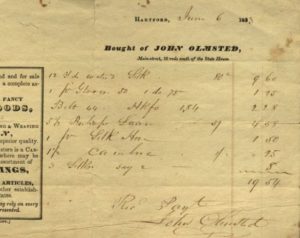
An Inconvenient Season: Charlotte Cowles’s Letters from December 1839
Letters between a sister in Farmington and a brother in Hartford reveal details about daily life at a time when the distance between the two communities wasn’t so easily traveled.
Read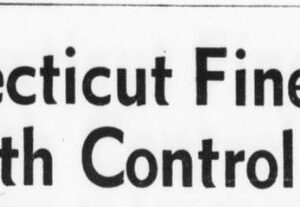
Taking on the State: Griswold v. Connecticut
In the 1960s, Estelle Griswold challenged Connecticut’s restrictive birth control law, making it all the way to the Supreme Court.
Read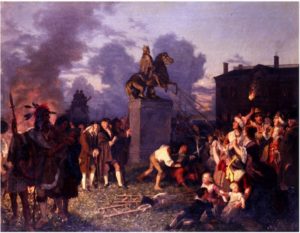
Mariann Wolcott and Ralph Earl – Opposites Come Together and Make History
The story of Mariann Wolcott and Ralph Earl captures much of the complexity the Revolutionary War brought to the lives and interactions of ordinary citizens.
Read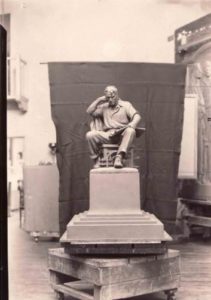
Evelyn Beatrice Longman Commemorates the Working Class
“Industry,” also known as “The Craftsman,” by Evelyn Longman, resides in Hartford and is a celebration of the working class and their contribution to society.
Read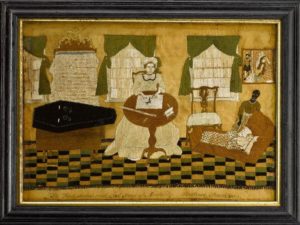
Prudence Punderson, Ordinary Woman, Extraordinary Artist: Needlework in Connecticut
Completed in the 1700s, “The First, Second and Last Scene of Mortality” is considered to be one of the most spectacular pieces of needlework in US history.
Read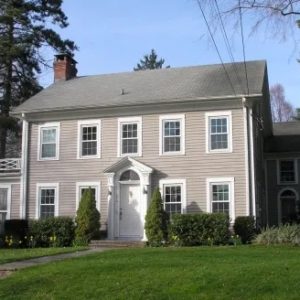
“Washburn Colonials”: Distinguished 1920s Homes Stand the Test of Time
Without formal training, Alice Washburn designed some of Connecticut’s most iconic Colonial Revival buildings of the early 20th century.
Read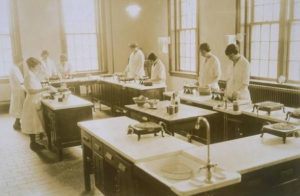
From Aprons to Lab Coats: The Art and Science of Home Economics
In 1893 the Storrs Agricultural College (the precursor to the University of Connecticut) began training women in domestic science, the discipline that would later be called home economics.
Read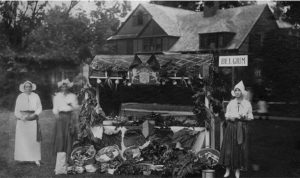
Washington’s Sister Susie Society
The Sister Susie Society in Washington, Connecticut, started out as a reading circle but became a fundraising and World War I relief organization.
Read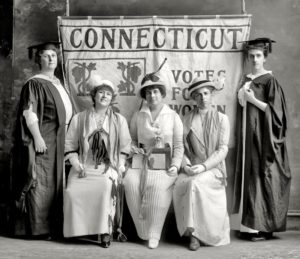
Connecticut Suffragists Appeal to the President – Today in History: July 12
On July 12, 1918, Connecticut suffragists rallied in Hartford and Simsbury to appeal to President Woodrow Wilson for help in getting women the right to vote.
Read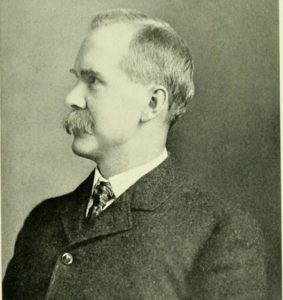
Connecticut Attorney General John H. Light and His Fight for Woman’s Suffrage
Attorney General John H. Light made his pro-suffrage stance public at a time when such advocacy could still lead to criticism
Read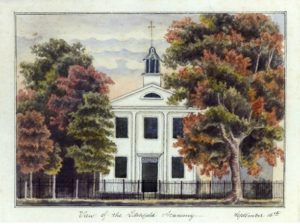
Sarah Pierce’s Litchfield Female Academy
While several educational academies existed for girls in the years following the American Revolution, few proved more influential than Sarah Pierce’s Litchfield Female Academy.
Read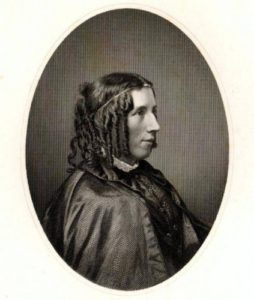
Harriet Beecher Stowe Born – Today in History: June 14
On June 14, 1811, author Harriet Beecher Stowe was born in Litchfield.
Read
Helen Keller in Connecticut: The Last Years of a Legendary Crusader
The internationally known author, political activist, and lecturer, Helen Keller, made her final home in Easton.
Read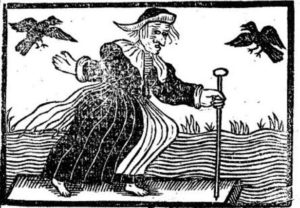
Alse Young Executed for Witchcraft – Today in History: May 26
On May 26, 1647, Alse Young of Windsor was the first person on record to be executed for witchcraft in the 13 colonies.
Read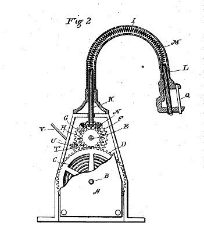
The Inventive Minds of Connecticut Women: Patents in the 19th Century
Between 1790 and 1930, Connecticut residents were issued the most patents in the US per capita, many of them inventions by women.
Read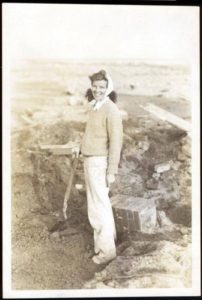
Katharine Hepburn Born – Today in History: May 12
On May 12, 1907, stage and screen legend Katharine Hepburn was born to Thomas Norval Hepburn and women’s right activist Katharine Houghton Hepburn.
Read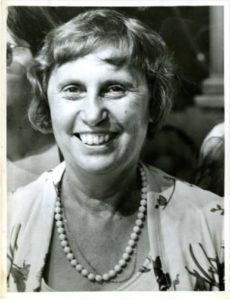
First Woman Elected as US State Governor Born – Today in History: May 10
On May 10, 1919, Ella Grasso, née Ella Rosa Giovanna Oliva Tambussi, the first woman governor in the US to be elected “in her own right,” was born in Windsor Locks.
Read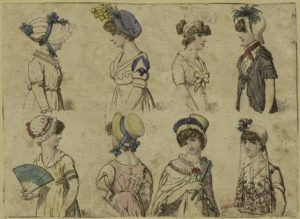
First Woman to Receive US Patent – Today in History: May 5
On May 5, 1809, Mrs. Mary Kies of South Killingly became the first woman in the United States to receive a patent.
Read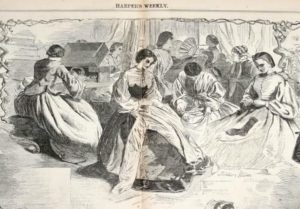
Crisis Management during the American Civil War: The Hartford Soldiers’ Aid Society
The Hartford Soldiers’ Aid Society was one of the most important relief organizations during the Civil War and provided new opportunities for women in the public sphere.
Read
Bridgeport Women Answer the Call – Today in History: April 15
On April 15, 1861, the women of Bridgeport created the nation’s first soldiers’ aid society during the American Civil War.
Read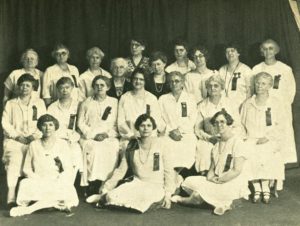
Celebrating Civil War Men and Women – Today in History: April 9
On April 9th, 1927 the Woman’s Relief Corps and Daughters of Union Veterans commemorated the 62nd anniversary of the surrender at Appomattox Courthouse.
Read
New Canaan’s Pioneering Female Physician
Dr. Emily Dunning Barringer was the first female ambulance surgeon in New York City and the first female physician to work as an intern in a New York City hospital.
Read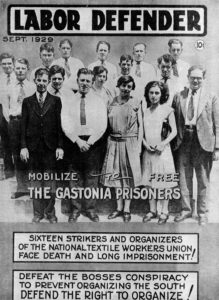
Vera Buch Weisbord’s “Radical” Life
Vera Wilhelmine Buch Weisbord was a labor activist who helped organize trade unions and strikes that shaped the labor movement of the 1920s and 1930s.
Read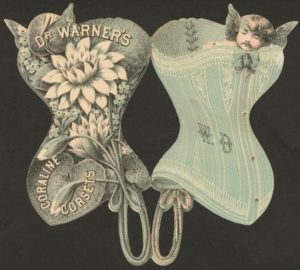
From Bombs to Bras: World War I Conservation Measures Transform the Lives of Women
A shortage of metal during World War I encouraged women’s clothing manufacturers (such as Bridgeport’s Warner Brothers Corset Company) to switch from producing corsets to brassieres.
Read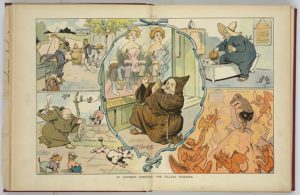
Connecticut and the Comstock Law
Connecticut passed its own state law in 1879 that carried the anti-contraception movement further than any other state in the country.
Read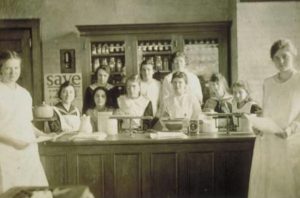
Much Good Might be Accomplished: Catharine Esther Beecher and the Pursuit of Domestic Economy
Thanks to this 19th-century educator and reformer, home economics is standard fare in schools today.
Read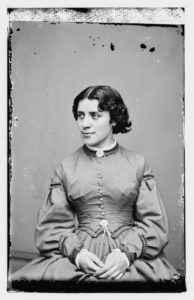
Anna Elizabeth Dickinson at Touro Hall – Today in History: March 24
On March 24, 1863, Anna Elizabeth Dickinson, a 20-year-old Quaker and abolitionist from Pennsylvania, spoke at Hartford’s Touro Hall.
Read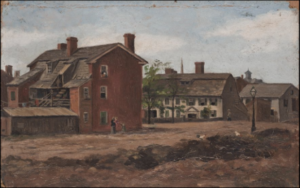
An Artist and Her Books: Amelia Watson, 1856–1934
Connecticut artist Amelia Watson’s works adorn some of the most elaborately designed and treasured volumes of the 19th and 20th century.
Read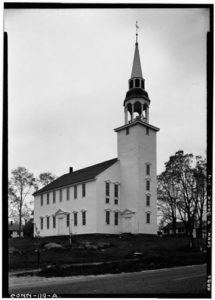
Celia Burleigh, Connecticut’s First Female Minister
In 1871, Celia Burleigh, a life-long activist and reformer, became minister of the Unitarian congregation in Brooklyn, Connecticut.
Read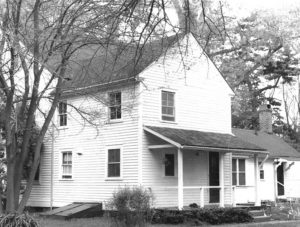
The Smith Sisters, Their Cows, and Women’s Rights in Glastonbury
By refusing to pay unfair taxes, these siblings became national symbols of discrimination suffered by women and of the struggle of the individual against government.
Read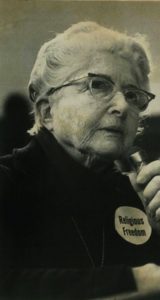
Hilda Crosby Standish, Early Proponent of Women’s Reproductive Health
A pioneer of sex education and family planning, this physician directed the state’s first birth control clinic in 1935.
Read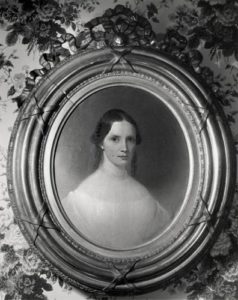
Looking Back: Tempest Tossed, the Story of Isabella Beecher Hooker
Isabella Beecher was a suffragist and spiritualist who shunned traditional female roles while alienating large parts of her family during her brother’s adultery scandal.
Read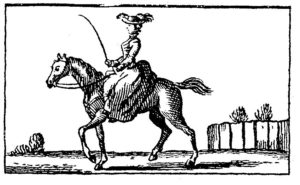
Sarah Kemble Knight’s Journey through Colonial Connecticut
In 1704, when long distance travel was rare and roads crude, a Boston woman journeyed by horseback to New York City and recorded her views of Connecticut along the way.
Read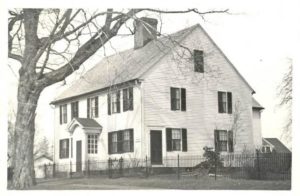
A Pioneering Woman in Business: Martha Parsons of Enfield
Enfield’s Martha Parsons broke new ground in her pursuit of employment opportunities for women. Her family home now belongs to the Enfield Historical Society.
Read
Jackson v. Bulloch and the End of Slavery in Connecticut
Nancy Jackson sued for her freedom in 1837. Her victory helped further the abolitionist cause in a state slowly moving toward outlawing slavery.
Read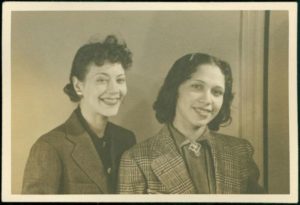
Remembering Fredi Washington: Actress, Activist, and Journalist
This actress earned acclaim for her portrayal of an African American woman who chooses to pass as white in order to escape racial discrimination but, in real life, she embraced her heritage and worked to end inequality.
Read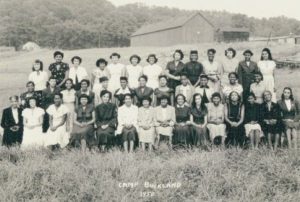
Laboring in the Shade
Thousands of Black Southern students, including a young Martin Luther King Jr., came north to work in Connecticut’s tobacco fields.
Read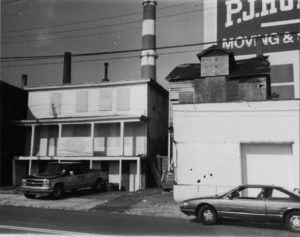
Mary and Eliza Freeman Houses
The Mary and Eliza Freeman houses are the only remnants of “Little Liberia,” a settlement of free African Americans in Bridgeport that began in 1831.
Read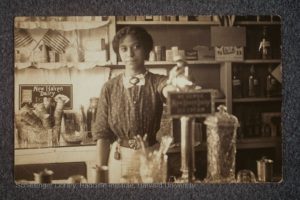
Anna Louise James Makes History with Medicine
Anna Louise James operated a drugstore in Hartford until 1911, making her the first female African American pharmacist in the state.
Read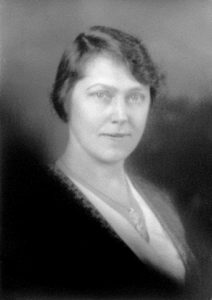
Dr. E. Irene Boardman Never Stopped Serving the Public
Having suffered from polio as a child, Emma Irene Boardman found her calling in relieving the pain of others.
Read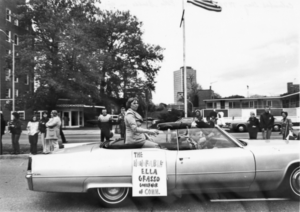
The Education of Ella Grasso
The daughter of Italian immigrants became Connecticut’s first woman governor, Ella Tambussi Grasso.
Read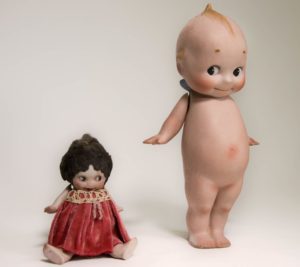
The Kewpies Buy A House in Westport
The Kewpies originally appeared as a comic strip in the Christmas issue of the 1909 Ladies Home Journal.
Read
Women and Defense: World War II on the Connecticut Home Front
Women who stepped into civil defense positions managed and implemented programs that educated the public, promoted war bond sales, and aided emergency preparedness.
Read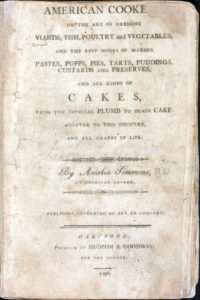
Amelia Simmons Adds a Uniquely American Flavor to Cooking
In 1796, Amelia Simmons authored American Cookery—believed to be the first cookbook authored by an American published in the United States.
Read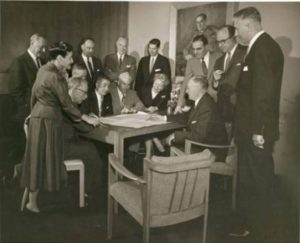
Beatrice Fox Auerbach: Retail Pioneer Led Iconic Family Department Store
Beatrice Fox Auerbach was pioneering retail executive who ran the G. Fox & Co. department store and numerous philanthropic benefiting people in Hartford and around the world.
Read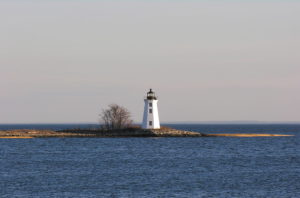
Kate Moore: Lighthouse Keeper and Coast Guard Heroine
In the 1800s, Kate Moore was pioneering lighthouse keeper in Bridgeport, assuming her responsibilities at age twelve.
Read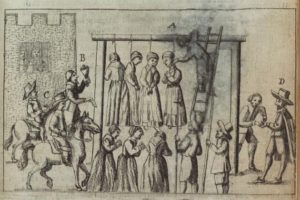
Witchcraft in Connecticut
Well before the Salem trials, Connecticut residents were executing “witches.” Connecticut is home to what was most likely the first execution of its kind in colonial America.
Read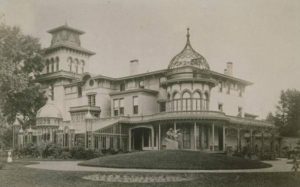
Elizabeth Jarvis Colt Born – Today in History: October 5
On October 5, 1826, Elizabeth Jarvis was born in Hartford.
Read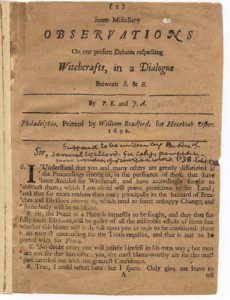
Accidental Shooting Leads to Witchcraft Conviction – Today in History: October 3
On October 3, 1651, Henry Stiles of Windsor was killed when the gun of Thomas Allyn, also of Windsor, accidentally discharged during a militia exercise.
Read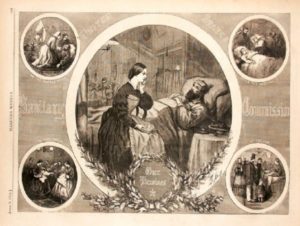
Sanitary Fair – Today in History: July 25
On July 25, 1864, the Stamford Ladies Soldiers’ Aid Society held a Sanitary Fair in response to the needs of Civil War soldiers
Read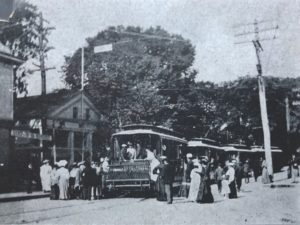
Trolley Campaigners Storm Small Towns and Votes for Women is the Battle Cry
In the wake of a 1912 trolley campaign, the woman’s suffrage movement rapidly gained ground across Connecticut.
Read
The Most Famous American in the World
In 1853, in cities and villages across Britain and Europe, throngs of admirers pushed to catch a glimpse of a barely 5-foot-tall writer from America whose best-selling novel had taken slavery to task.
Read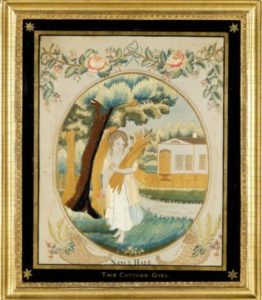
Educator Sarah Pierce Born – Today in History: June 26
On June 26, 1767, pioneering educator Sarah Pierce was born in Litchfield; during her long life, Pierce opened one of the nation’s first schools for women.
Read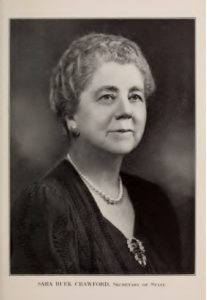
Votes for A Woman: Sara Buek Crawford
As Connecticut’s first female statewide elected official and first female Secretary of State, Sara Crawford broke barriers for women throughout her career.
Read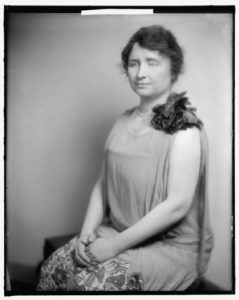
Helen Keller Dies – Today in History: June 1
On June 1, 1968, American author, political activist, and lecturer Helen Keller died at the age of 87.
Read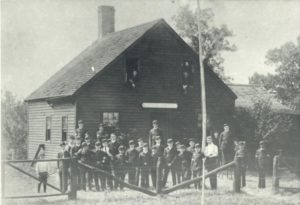
Mary Hall: Connecticut’s First Female Attorney
Writer and suffragist Mary Hall studied law under John Hooker and became Connecticut’s first female attorney.
Read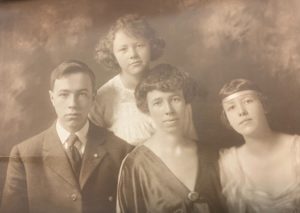
Josephine Bennett: Hartford’s City Mother
By linking disparate social and political movements of the early 20th century, activist Josephine Bennett was “intersectional” well before the term was invented.
Read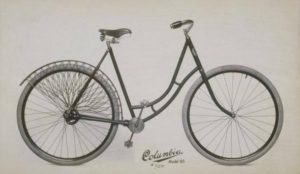
Albert Pope Pioneered Bicycles for Women
Hartford-based inventor Albert Pope saw his first bicycle at the 1876 Centennial Exposition in Philadelphia and was so impressed that he went to Europe to study how bicycles were made.
Read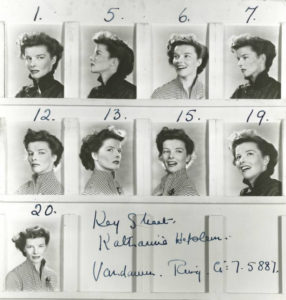
Katharine Hepburn’s Love Affair (with Connecticut)
One of the most popular actresses of the 20th century, Katharine Hepburn was born in Hartford and lived much of her later life in Old Saybrook.
Read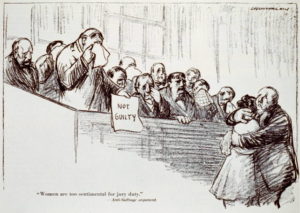
Elizabeth W. Coe Demands the Right of Jury Service
After passage of the 19th Amendment, Elizabeth W. Coe of Waterbury argued that women should be granted the right to serve on jury panels.
Read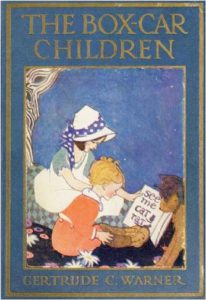
Connecticut: Home to the Boxcar Children Mysteries – Who Knew?
…that Gertrude Chandler Warner, a lifelong resident of Putnam, Connecticut, authored the popular series The Boxcar Children Mysteries?
Read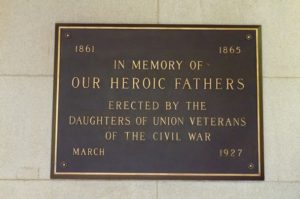
The Gettysburg Address and Heroic Fathers Bronze Tablets at the State Capitol
In 1927, two different women’s organizations dedicated plaques to commemorate events and service in the Civil War.
Read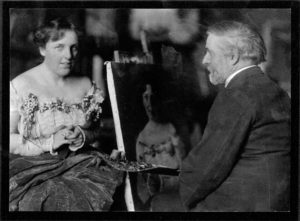
Theodate Pope Riddle: Connecticut’s Pioneering Woman Architect
Despite opposition from a male-dominated profession and a lack of formal training, Theodate Pope Riddle became a pioneering female architect.
Read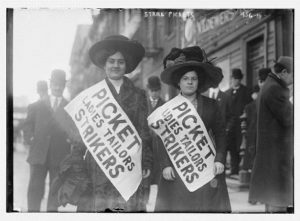
Triangle Shirtwaist Fire: Connecticut Lessons from a Tragedy
While the Triangle Shirtwaist fire in New York City is one of the most famous tragedies behind the organized labor movement, Connecticut had its share of equally dangerous work environments in the early 20th century.
Read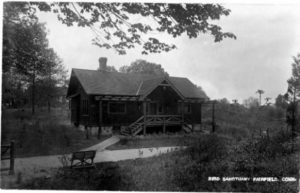
A Woman Ahead of Her Time: Mabel Osgood Wright
This writer and photographer founded the Connecticut Audubon Society and created Fairfield’s Birdcraft Sanctuary.
Read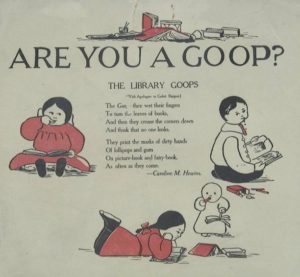
The Public Library Movement: Caroline Hewins Makes Room for Young Readers
This Hartford librarian played a leading role in national efforts to transform libraries into public centers that welcomed patrons from all walks of life.
Read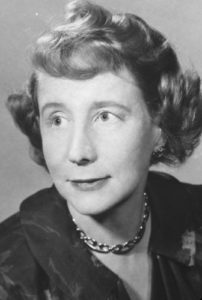
The First Hospice – Who Knew?
Founded by Florence Wald, a former dean of Yale University School of Nursing, Connecticut Hospice opened in March of 1974.
Read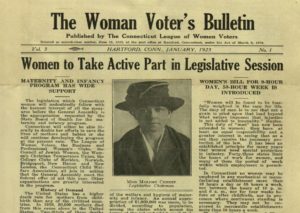
A Day for Women – Today in History: March 8
Women’s fight for the right to vote in the Constitution State may be dated to 1869, when the Connecticut Woman Suffrage Association (CWSA) was organized.
Read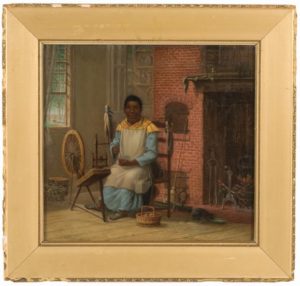
Nancy Toney’s Lifetime in Slavery
From scant evidence, including a portrait, gravestone, census data, and will, a partial image of a Connecticut life lived in slavery emerges.
Read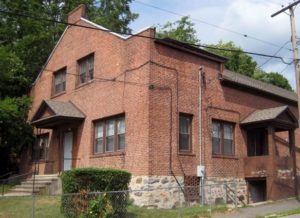
A Woman Who Developed Tolerance: Leila T. Alexander
As a member of the War Council, Leila T. Alexander served on several Council committees including education, employment, advisory, social service, and welfare.
Read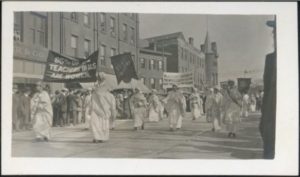
Women Win the Right to Vote
After a decades-long struggle, women in Connecticut and across the US gained a say in government.
Read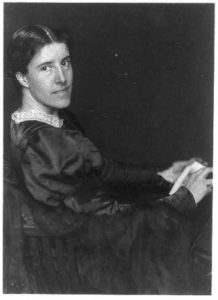
Charlotte Perkins Gilman Born – Today in History: July 3
On July 3, 1860, Charlotte Anna Perkins (Charlotte Perkins Gilman) was born in Hartford, Connecticut.
Read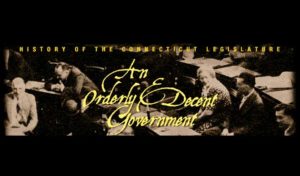
An Orderly & Decent Government: Searching for the Common Good, 1929-1964
Organized labor grew strong during wartime while discriminatory practices in housing and education persisted throughout the state.
Read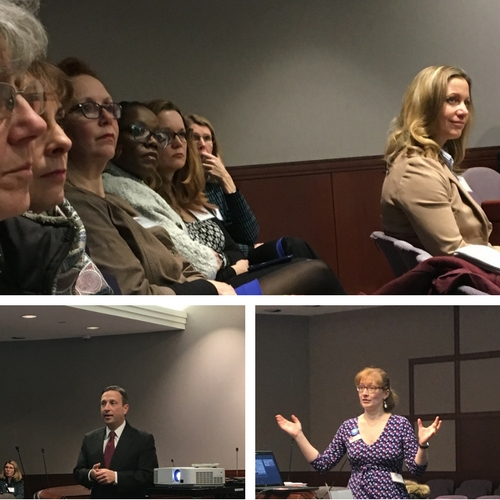
Catharine Beecher, Champion of Women’s Education
Sister to two of the most famous figures of the 19th century–Harriet Beecher Stowe and Henry Ward Beecher–Catharine Esther Beecher achieved fame in her own right as an educator, reformer, and writer.
Read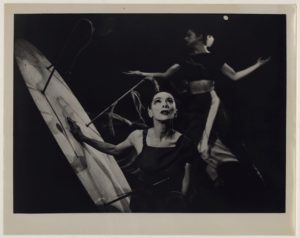
Martha Graham, Connecticut College, and the American Dance Festival
Martha Hill established the School of the Dance on the campus of the Connecticut College for Women in 1948, and hired such renowned instructors as Martha Graham.
Read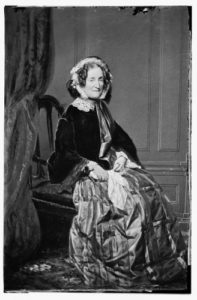
Miss Huntley’s School Opens – Today in History: August 1
On August 1, 1814, a young teacher named Lydia Huntley opened a school for young women in Hartford.
Read
Theodate Pope Riddle Dies – Today in History: August 30
On August 30, 1946, Farmington’s Theodate Pope Riddle, one of the nation’s first successful woman architects, died at the age of 79.
Read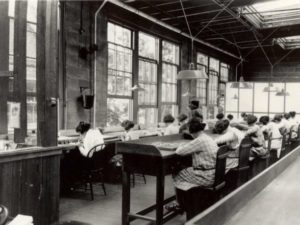
Waterbury’s Radium Girls
In the early 20th century, girls working at the Waterbury Clock Company faced death and disease from exposure to radium in the workplace.
Read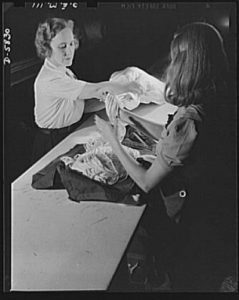
First Human Test of a Nylon Parachute – Today in History: June 6
On June 6, 1942, Adeline Gray made the first jump by a human with a nylon parachute at Brainard Field in Hartford.
Read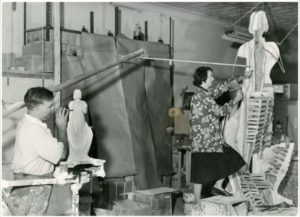
Frances Laughlin Wadsworth: Sculpting the Past
Her statues honor the famous, from Thomas Hooker and Helen Keller to Alice Cogswell, the first pupil of what became The American School for the Deaf.
Read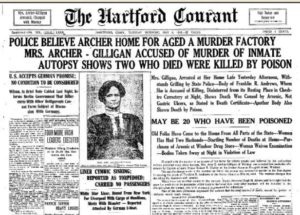
Windsor’s “Murder Factory”
It only took 4 hours for a jury to convict Amy Duggan Archer Gilligan of operating, what the Hartford Courant labeled, a “murder factory.”
Read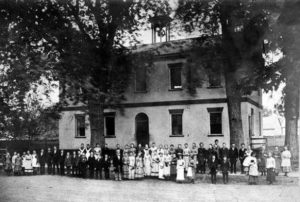
Wethersfield Academy
In the mid-17th century, Connecticut was considered the most literate place on earth, primarily due to the early Puritans’ insistence that everyone be able to read and write.
Read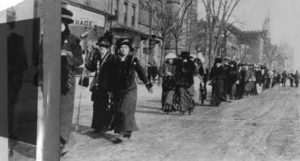
Looking Back: How the Vote Was Won
Today it is the Katharine Hepburn Cultural Arts Center (The Kate) but it began as the Old Saybrook Musical and Dramatic Club.
Read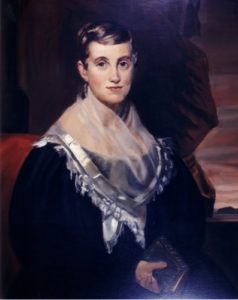
Prudence Crandall Fights for Equal Access to Education
A headmistress champions education for African American women and although forced to close her school in 1834, she helped win the battle for generations that followed.
Read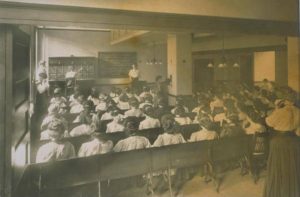
Connecticut’s First Female Telephone Operator – Today in History: March 24
On March 24, 1879, Marjorie Gray became Connecticut’s first female telephone operator.
ReadMore Articles




